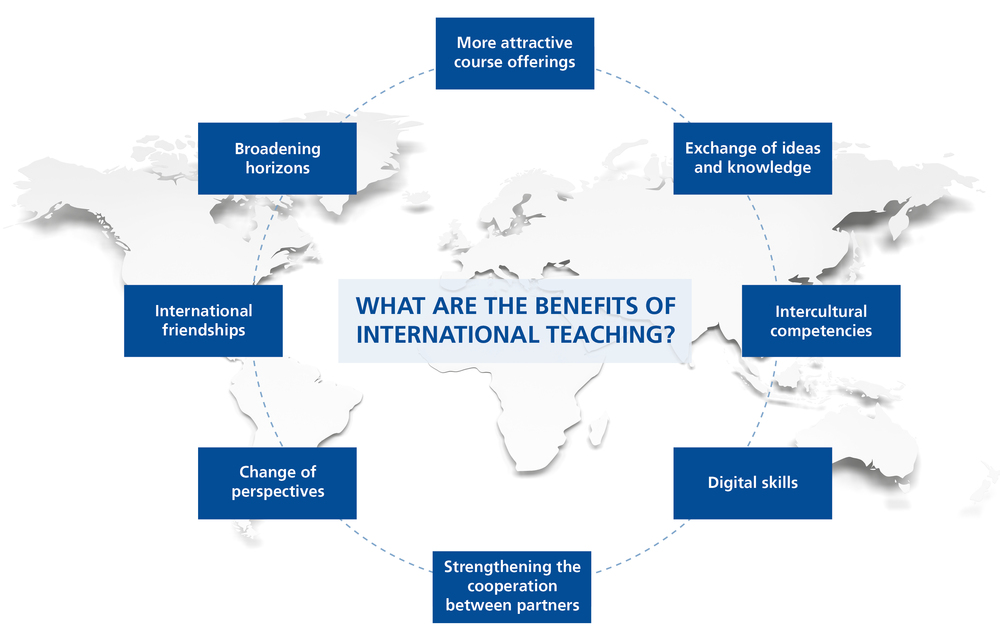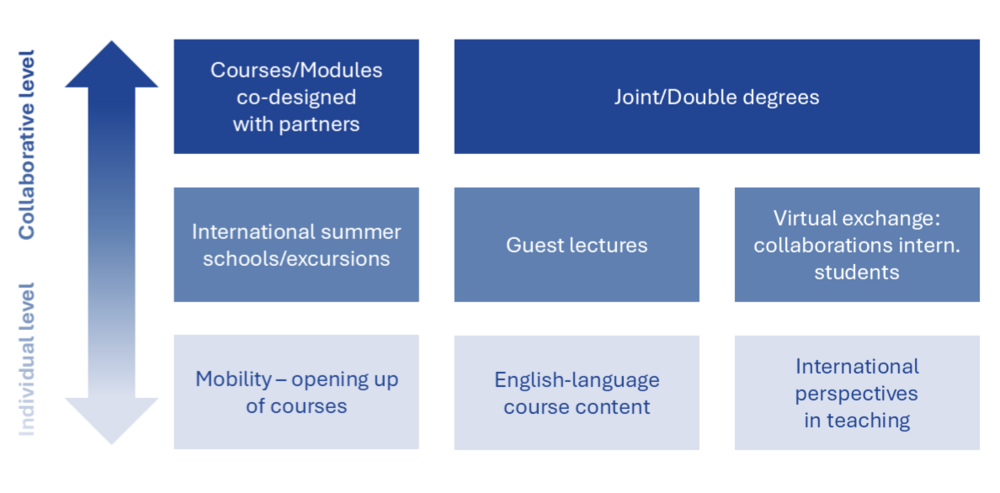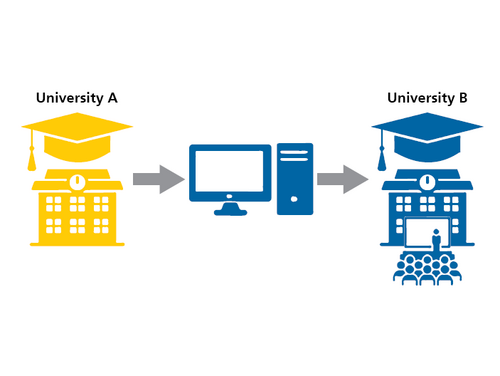Internationalization at Home
 Photo: busracavus/Ex/GettyImages
Photo: busracavus/Ex/GettyImages
Many aspects of studying at the FernUniversität are already international. Internationalization at Home provides students whose life situations restrict their mobility with a range of options to add virtual international experiences to their studies as an alternative to a physical stay abroad. These can include, for example, summer schools and internationally oriented collaborative modules or virtual mobility.
Strategy
 Illustration: FernUniversität
Illustration: FernUniversität
Digital Internationalization
During the COVID-19 pandemic, the importance of digital internationalization increased dramatically throughout the higher education sector. Digital internationalization offers valuable opportunities for acquiring the kind of international experience and perspectives that are increasingly sought-after in today’s globalized society, while doing so in a way that conserves resources.
Concept: Internationalization at Home at the FernUniversität (PDF 630 KB)
With this in mind, in October 2020, the University Board put together a set of recommendations on the integration of digital international modules and courses into degree programs. They recommended that faculties offer at least one internationally oriented module as an elective in their bachelor’s programs and make such a module mandatory in every master’s program.
- Recommendations on internationalization in teaching (PDF 116 KB)
Designing Virtual and International Teaching
 Illustration: FernUniversität
Illustration: FernUniversität
International (Distance) Learning Can Take Many Forms!
FernUni Students can choose from a wide range of internationally oriented courses and classes offered at the FernUniversität both as part of the curriculum and outside of it..
Virtual Mobility

Virtual mobility means that students of one university participate virtually in a course or module offered by a partner university. This takes place in much the same way as if they were actually studying on-site. Thanks to cooperation agreements, it is very often possible to credit completed courses to your home study program.
Virtual Exchange – Collaborative Online International Learning (COIL)
 Illustration: FernUniversität
Illustration: FernUniversität
Virtual Exchange, also known as COIL, involves international students work together on a project or issue using digital tools. These types of teaching formats are usually developed collaboratively with the participating partner universities. Entire modules or just parts of a course can be created and used together.
COIL programs usually consist of 3-4 elements:
- Ice-breaking activities
- Comparative debates
- Collaborative work, problem solving
- Presentation of results, reflection
What is virtual exchange?
An example of one model of VE, class-to-class exchanges, is explained in this video:

